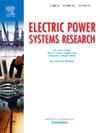固定和移动电池储能灵活性在双向有源配电网鲁棒运行中的应用
IF 4.2
3区 工程技术
Q2 ENGINEERING, ELECTRICAL & ELECTRONIC
引用次数: 0
摘要
在配电网中利用柔性是为了实现配电网的更优运行。利用灵活性的方法之一是使用储能系统。在可变电价配电网运行中,储能系统通过在非高峰时段充电,在高峰时段放电,为配电网创造了灵活性。蓄电池是配电网运行中应用最广泛的储能系统,分为固定蓄电池和移动蓄电池两大类。在固定电池中,电池的安装位置是已知的,但在移动电池中,电池是用卡车运输的,其位置会随着操作而变化,这是移动电池的时空灵活性,其位置是根据为卡车停车而创建的停车场来确定的。本文提出了在固定电池和移动电池并存的情况下配电网双向运行的公式。在该公式中,首先建立了固定电池和移动电池的模型,然后将其聚合到双向配电网的运行问题中。移动电池的时空灵活性是一种允许各种应用的特性。与只有时间灵活性的固定电池不同,在移动电池中,时间和空间的灵活性都存在并形成。在该模型中,采用鲁棒优化方法对问题的不确定性进行建模。最后,在IEEE 33总线网络上进行了仿真,验证了该模型的性能和灵活性。考虑无固定电池和移动电池、有固定电池、有移动电池和同时有固定电池和移动电池的4种一般状态,以及从母线1馈电、从母线33馈电和从两侧馈电3种情况,研究了问题的目标函数值、网络的视在功率峰值和有功损耗指标,表明了利用本文所述灵活性的有效性。与不使用任何存储设备的情况相比,在供电双方的网络中使用两种类型的存储设备,目标函数值、有功功率损耗和视在功率峰值分别减少了12%、70%和13%。本文章由计算机程序翻译,如有差异,请以英文原文为准。

Application of fixed and mobile battery energy storage flexibilities in robust operation of two-way active distribution network
The use of flexibilities in the electricity distribution network is aimed at achieving more optimal operation of this network. One of the methods of using flexibility is using energy storage systems. In the operation of the distribution network with variable tariff, energy storage systems create flexibility in the network by charging in off-peak hours and discharging in peak hours. Batteries, which are the most widely used storage systems in the electricity distribution network for the operation of this network, are divided into two categories: fixed and mobile batteries. In fixed batteries, the installation location of the battery is already known, but in mobile batteries, the battery is transported on a truck and its location changes according to the operation, which is spatial-temporal flexibility of mobile batteries, and their location is determined according to the parking lots created to stop the truck. In this paper, the formulation of two-way distribution network operation in the presence of fixed and mobile batteries is presented. In the presented formulation, firstly, the model of fixed and mobile batteries is presented, and then it is aggregated in the problem of operation of two-way distribution network. The spatial-temporal flexibility of a mobile battery is a feature that allows for various applications. Unlike a fixed battery that only has temporal flexibility, in a mobile battery both temporal and spatial flexibility exist and are formulated. In the presented model, the robust optimization method is used to model the uncertainties of the problem. Finally, simulations on the IEEE 33-bus network have been presented to prove the capability of the presented model and the flexibility used. Considering 4 general states without fixed and mobile batteries, despite the fixed battery, despite the mobile battery and despite simultaneous both types of fixed and mobile batteries, in 3 cases, feeding from bus 1, feeding from bus 33 and feeding from both sides, the indices of the objective function value of the problem, the apparent power peak of the network and the active power losses have been investigated, which shows the effectiveness of using the flexibility mentioned in this paper. The value of the objective function, active power losses, and the apparent power peak of the network by using both types of storage devices in the network from both sides of supply has been reduced by 12, 70, and 13 percent, respectively, compared to the case where none of the storage devices were used.
求助全文
通过发布文献求助,成功后即可免费获取论文全文。
去求助
来源期刊

Electric Power Systems Research
工程技术-工程:电子与电气
CiteScore
7.50
自引率
17.90%
发文量
963
审稿时长
3.8 months
期刊介绍:
Electric Power Systems Research is an international medium for the publication of original papers concerned with the generation, transmission, distribution and utilization of electrical energy. The journal aims at presenting important results of work in this field, whether in the form of applied research, development of new procedures or components, orginal application of existing knowledge or new designapproaches. The scope of Electric Power Systems Research is broad, encompassing all aspects of electric power systems. The following list of topics is not intended to be exhaustive, but rather to indicate topics that fall within the journal purview.
• Generation techniques ranging from advances in conventional electromechanical methods, through nuclear power generation, to renewable energy generation.
• Transmission, spanning the broad area from UHV (ac and dc) to network operation and protection, line routing and design.
• Substation work: equipment design, protection and control systems.
• Distribution techniques, equipment development, and smart grids.
• The utilization area from energy efficiency to distributed load levelling techniques.
• Systems studies including control techniques, planning, optimization methods, stability, security assessment and insulation coordination.
 求助内容:
求助内容: 应助结果提醒方式:
应助结果提醒方式:


